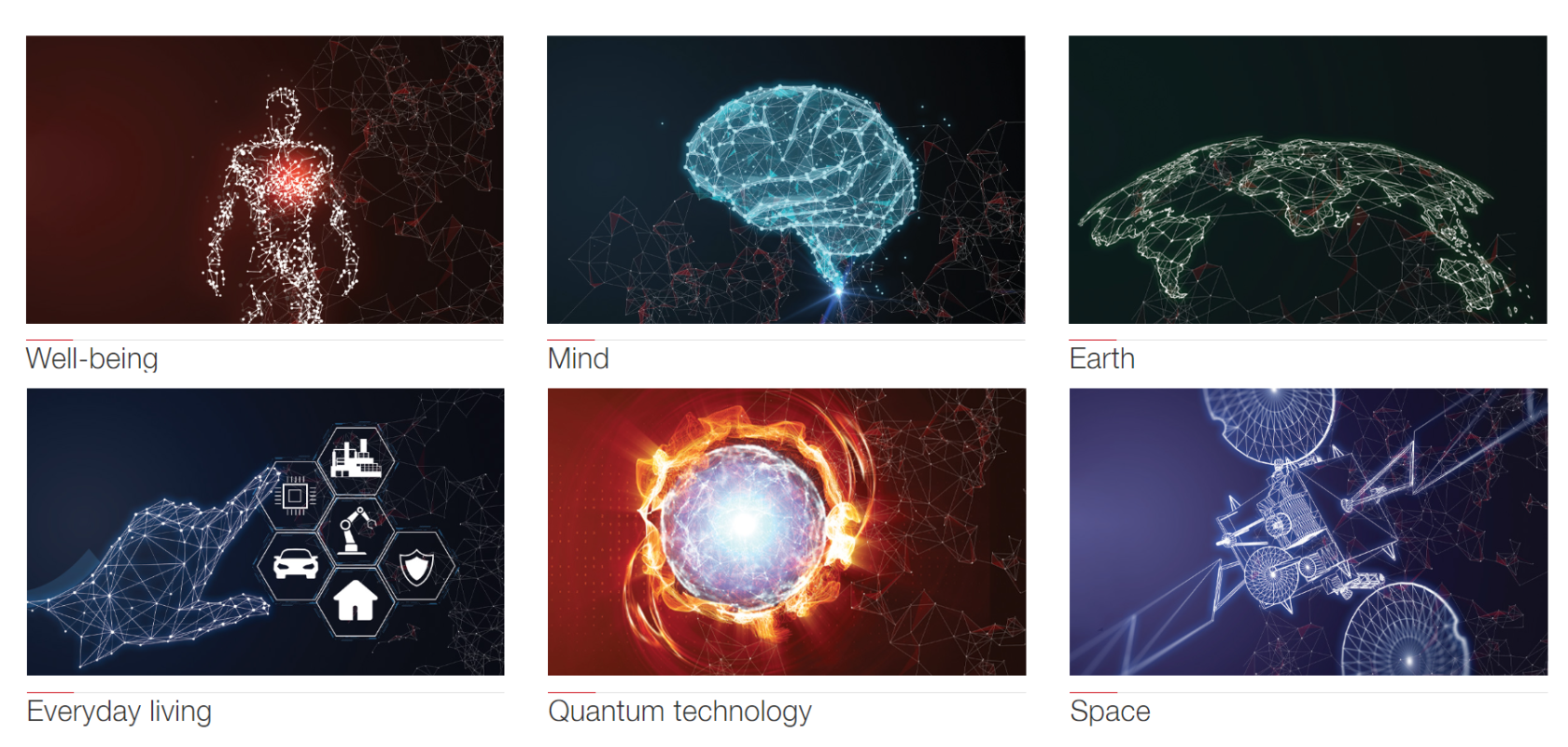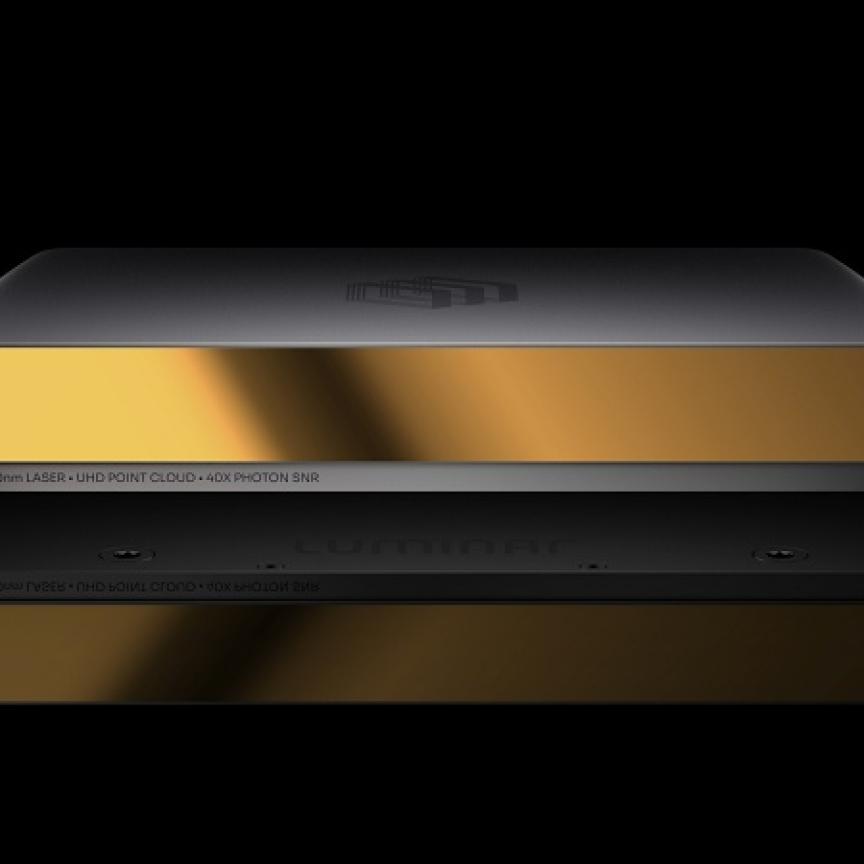Every five years in the city of Hamamatsu, Japan, attendees of the Hamamatsu Photonics ‘Photon Fair’ have the opportunity to learn about the company’s latest technological advancements and capabilities in a dynamic, futuristic setting.
Each time it takes place, the event proves to be a fantastic spectacle, not only showcasing Hamamatsu Photonics’ far-reaching capabilities, but also demonstrating the essential role lasers and optics have to play in the future of our society.
This year, the company sought to extend the reach of the Photon Fair’s magic by taking some of its best elements and sharing them with the wider photonics community. And so, at this year’s Photonics West, attendees had the opportunity to explore the Hamamatsu Photonics ‘Vision Suite’: a blend of interactive demos and presentations showcasing a curated selection of technologies, applications, and research designed to inspire visitors with the future potential and possibilities of photonics.
One mission: To inspire
On entering the Vision Suite, Stephanie Fullerton, Life Science Marketing Manager at Hamamatsu Photonics, explained that it was designed to highlight technologies spanning six photonics application areas: Well-being, Mind, Everyday Living, Quantum Technology, Earth and Space.
“The Vision Suite is an opportunity to showcase the extent of what we do at Hamamatsu Photonics and the wide range of expertise we have,” she said. “While our website is filled with product information and specification sheets, and our booth’s experts are on hand to provide technical details of our latest components, here in the Vision Suite, we only have one mission: to inspire. We’re really taking a step back to offer a broader view of the many areas in which photonics can have an impact on our daily lives.”
Well-being, Mind and Everyday Living
During the first part of the Vision Suite tour, visitors were dazzled with an array of vibrant light sheet imagery, real-time 3D point clouds, and demos of spectrometers and proximity sensors, as they learned how photonics influences our well-being and everyday lives.
“Here we’re looking to demonstrate how photonics can significantly enhance our overall well-being and health,” said Fullerton. “Our components underpin a wide range of medical technologies, from advanced imaging and sensing systems enabling faster, more accurate disease diagnosis, to devices facilitating point-of-care treatment and continual health monitoring, for example via wearable technologies.”
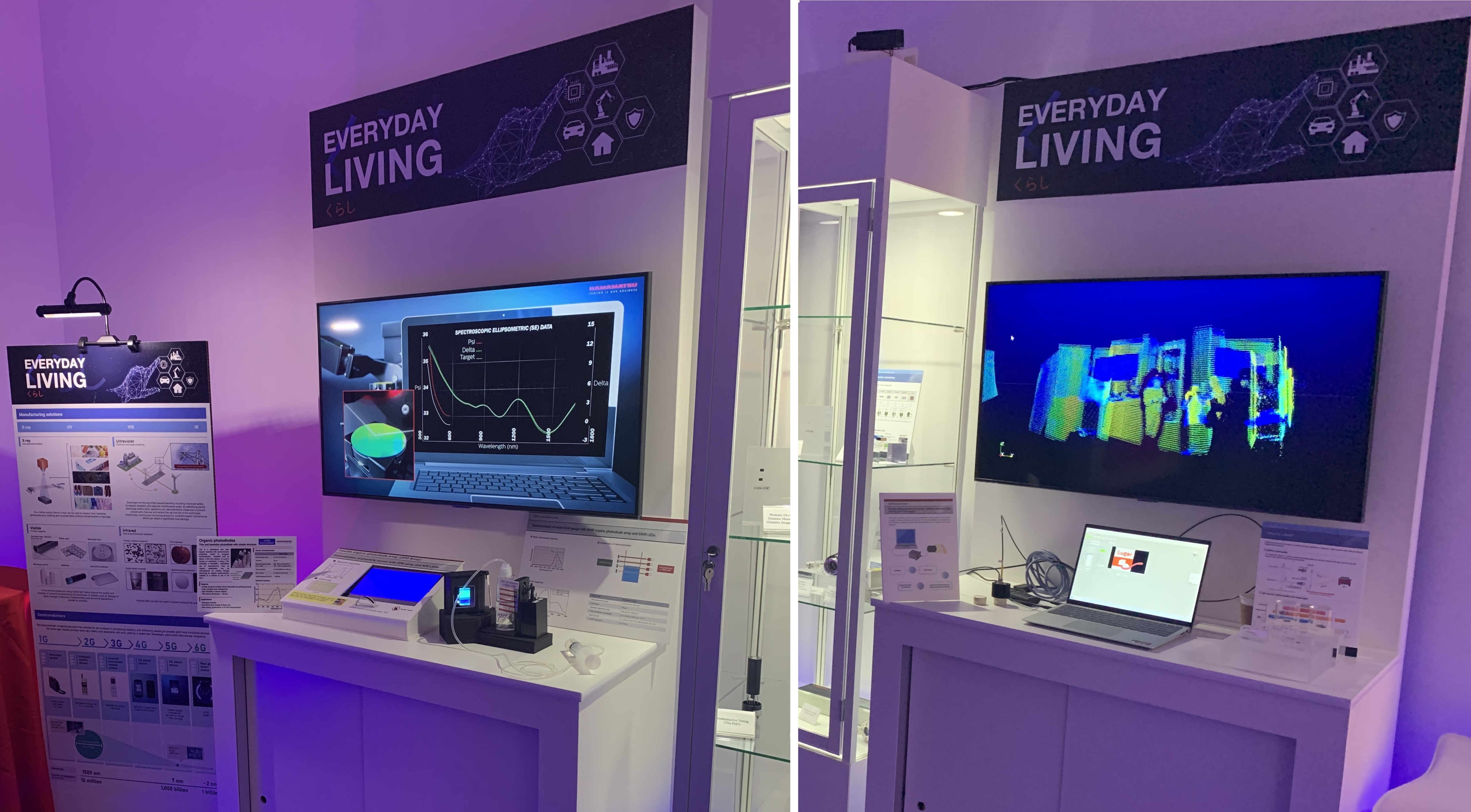
In 'Everyday Living' visitors learned how photonics influences day-to-day life, covering everything from spectroscopy systems for chemical identification to LiDAR detectors for point cloud generation, as can be seen on the right-hand display
Fullerton explained that while it may not be apparent on the face of it, many devices and instruments used throughout the life sciences are in fact ‘powered by Hamamatsu’. “Taking our photomultiplier tubes (PMTs) as an example, they are used in everything from quantitative PCR instruments to confocal microscopes, PET scanners, flow cytometry and spatial biology systems, imaging everything from tiny viruses to large portions of the body,” she said. “We also have very strong offerings in the field of light sheet microscopy, having a patent for our ‘Lightsheet Readout Mode’, which synchronises the rolling shutter of sCMOS/qCMOS cameras with the scan of the light sheet through tissues. While we aren’t known as manufacturers of microscopes in the life science community, our brand and components are well known by the microscope manufacturers themselves.”
Neural imaging and optogenetics are also exciting fields in which Hamamatsu Photonics’ components are operating behind the scenes. “Photonics enables precise, non-invasive observation of the brain’s 86 billion neurons,” said Fullerton. “Advanced photonics tools are helping researchers map and explore this intricate circuitry, shedding light on neurobiology and cognitive functions. One area of research that is interesting is the implementation of brain-computer interfaces. Because optical technologies are shedding light on neural systems and signal patterns, these insights could translate into applications in healthcare, prosthetics and human computer interaction. Photonics is therefore helping us unlock the mysteries of the mind, which could one day lead to the development of transformative brain-related technologies that can enhance our understanding, well-being, and cognitive abilities.”
In ‘Everyday Living’ the spotlight was put on photonics tech influencing day-to-day life, covering everything from spectroscopy systems for chemical identification to LiDAR detectors and organic photodiode (OPD) arrays for distance sensing. Visitors had the chance to stand in front of a LiDAR sensor and see themselves in point cloud form, or test a proximity sensor consisting of a flexible OPD array and NIR LEDs, which demonstrated the possibility of one day controlling interfaces without having to touch them. Similar to microscope manufacturers within the life sciences, while a large portion of LiDAR system manufacturers are familiar with and use Hamamatsu Photonics’ components, the company operates behind the scenes rather than being a consumer-facing brand.
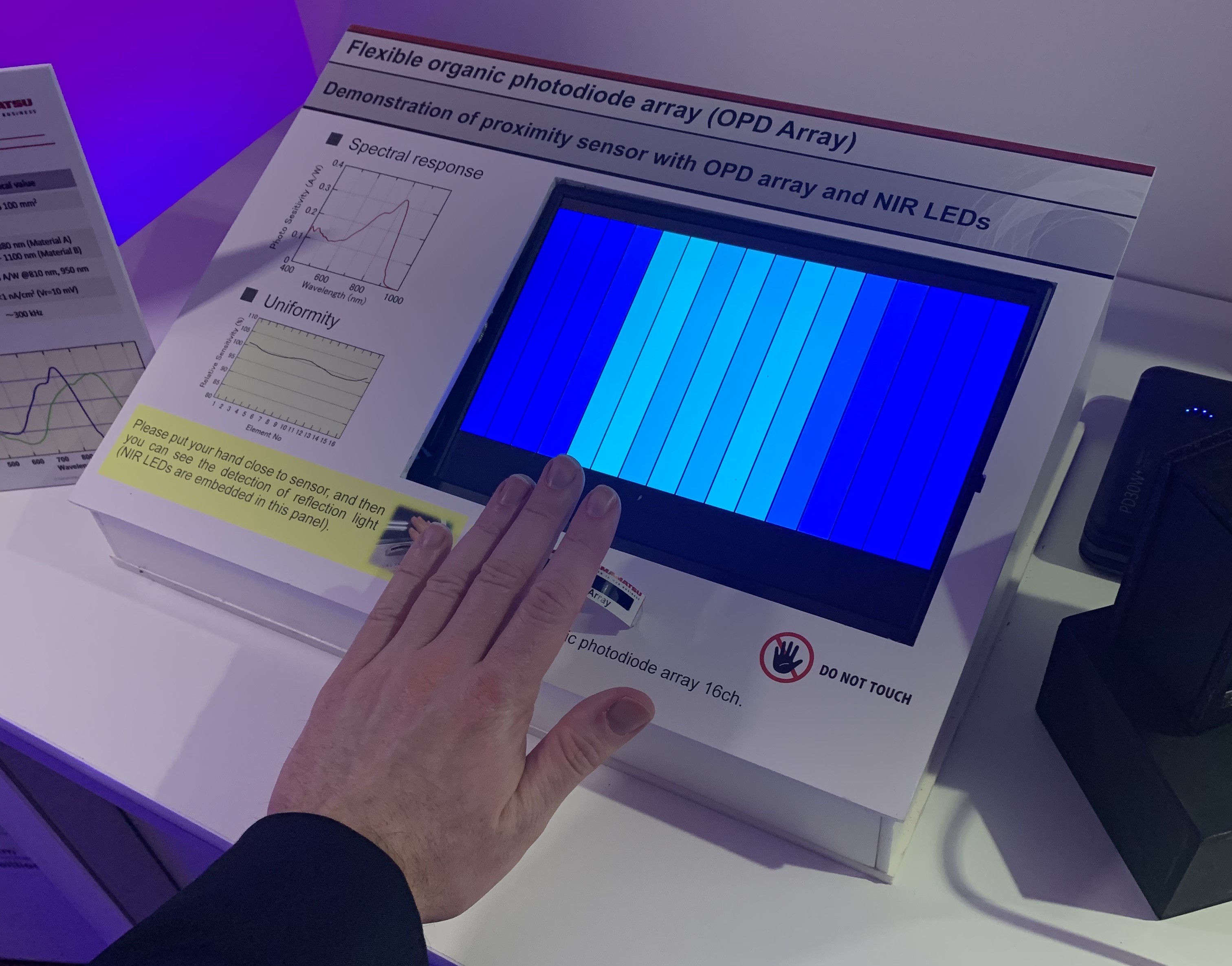
A proximity sensor demo comprising a flexible OPD array and NIR LEDs that enables touchless interaction with interfaces
The section also highlighted the company’s expertise in developing sensors across the X-ray, UV, visible and infrared wavelengths, for deployment across a wide range of inspection applications in the manufacture of everyday products such as: car batteries, pharmaceutical blister packs, beverage cans, food, semiconductor materials used in electronic devices, and more.
Earth and Space
Moving on from ‘Everyday Living’, the next part of the Vision Suite showcased how photonics is helping tackle challenges in space exploration and environmental conservation.
For example, visitors could learn how Hamamatsu Photonics’ InGaAs sensors have helped spacecraft detect and map traces of water on the surfaces of asteroids, or how its CCD image sensors are used in some of the world’s most advanced telescopes to detect faint celestial objects at exceptional resolution. The company has even developed some of the largest PMTs ever made, which have been instrumental to the detection of neutrino particles emitted by distant supernovae. Visitors also learned how devices such as spectrometers, qCMOS and CMOS cameras (all of which are offered by Hamamatsu Photonics) play important roles in astronomy – enabling us to observe distant stars, galaxies and exoplanets, and even determine their chemical makeup.
Closer to home, photonics is also playing a vital role in the monitoring and conservation of our planet’s environment. In the Vision Suite’s ‘Earth’ section, demos showcased how NIR spectroscopy is currently being used for plastic sorting in recycling applications, preventing the need for destructive methods or additional chemical products to identify different types of plastic. Visitors learned how the technology also has future applications in the automotive industry, where certain plastics are sought for use in combustion reactions, the byproduct of which can be hydrogen, an alternative fuel source that shows great promise for powering vehicles with clean energy.
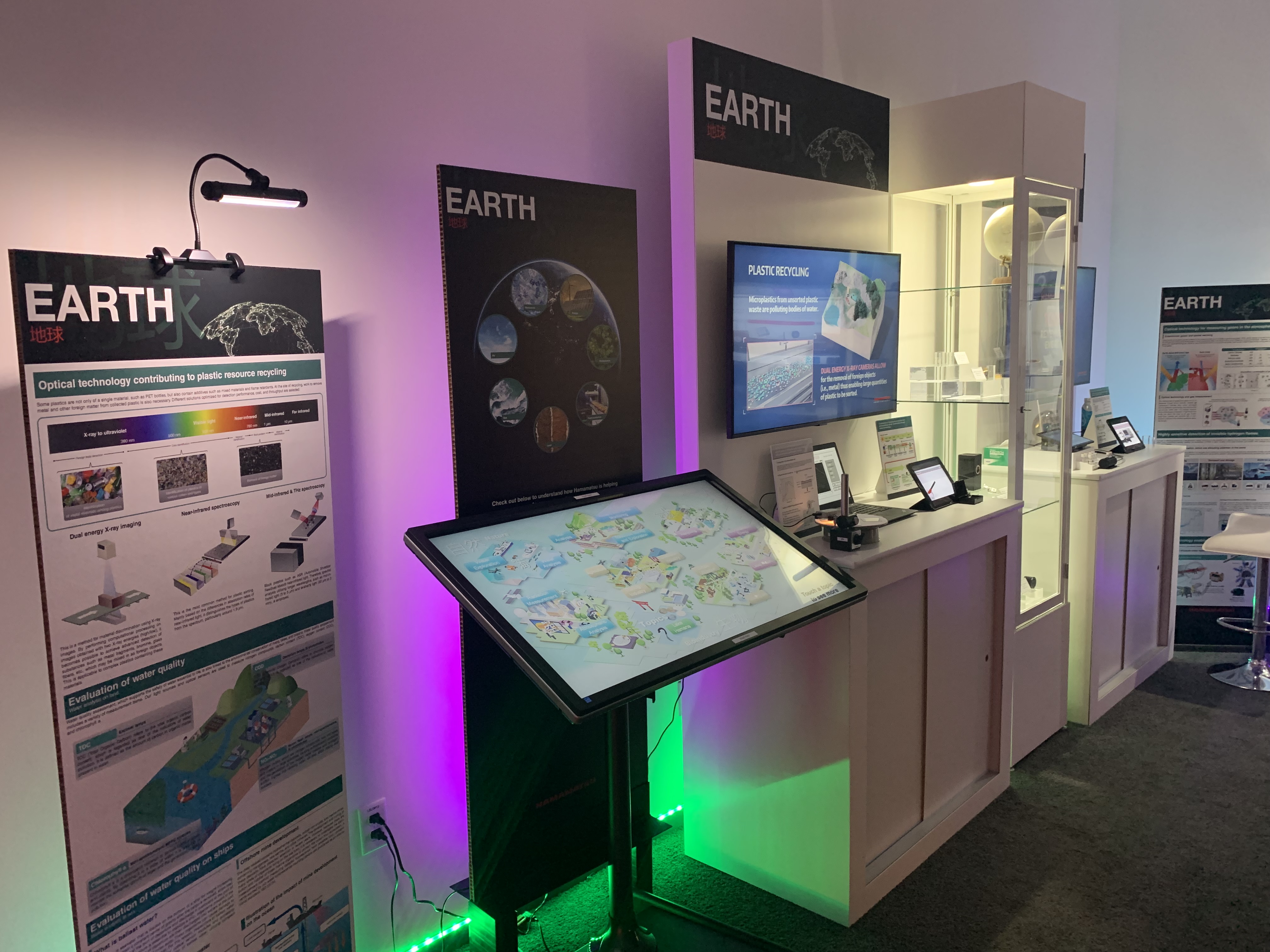
The interactive demos of 'Earth' highlighted the countless ways photonics is enabling environmental monitoring, helping promote a more sustainable and cleaner environment
Hamamatsu Photonics has also developed UV sensors that could one day be mounted on drones to aid the early detection of forest fires, a rapidly growing issue with the increase in frequency of wildfires witnessed in recent years due to global warming. The company’s spectrometers and PMTs can also be used to analyse agricultural run-off, ensuring that harmful chemicals from fertilisers aren’t seeping into the surrounding environment. In addition, photonics is also playing an important role in the real-time detection and analysis of harmful atmospheric pollutants from industry, enabling faster response and better regulation.
Overall the Vision Suite did an excellent job of conveying to visitors that photonics plays a pivotal role in developing innovative solutions for pollution reduction and promoting a more sustainable and cleaner environment.
Quantum Technologies
The final section of the Vision Suite highlighted how photonics is enabling the rapid development of quantum systems for communication, imaging, computation, and sensing. The timing of the Suite’s debut in San Francisco couldn’t have been better, as this was also the first year of SPIE’s Quantum West Expo, which was established to showcase quantum technologies’ long-awaited emergence from the lab as deployable systems for use in real-life applications.
“If you look at the applications of quantum technology, around two thirds of them are enabled by photonics,” said Klea Dhimitri, Quantum Project Lead and an Application Engineer at Hamamatsu Photonics. She indicated a nearby table on which an array of Hamamatsu Photonics’ components were laid out. “A lot of the components you see here are all products you would find in a quantum computer. For example, we have single photon detectors such as our PMTs and single-photon avalanche diodes (SPADs), which there’s been a lot more interest in recently as quantum technologies move more towards using visible wavelengths, especially in the trapped ion and neutral atom space. Our ORCA-Quest qCMOS camera was also recently used for qubit state readout in the development of a logical processor with neutral atoms.”
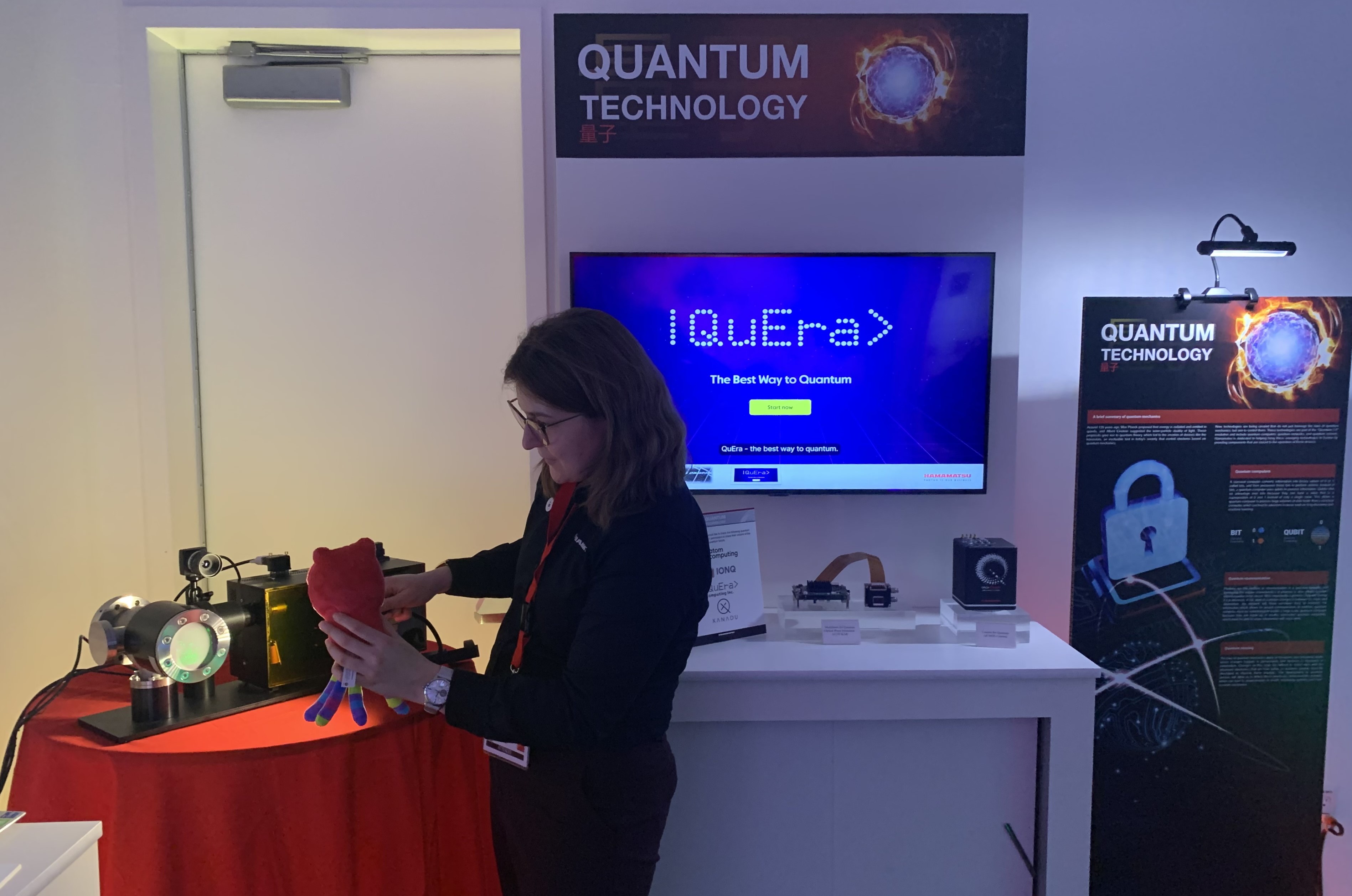
In the 'Quantum Technologies' part of the Vision Suite, Hamamatsu Photonics' Klea Dhimitri demonstrated how photonics is vital to the development of advanced quantum imaging, sensing, computing and communication systems
Videos on display also showed visitors how photonics provides essential components for quantum sensors, enhancing precision in fields such as quantum metrology and quantum imaging. They presented how quantum sensors could one day be used to detect very slight variations in magnetic fields, electric fields and gravitational fields, which opens up a plethora of exciting applications.
“Quantum sensors could help us understand volcanic eruptions, predict earthquakes, advance neuroimaging, improve medical diagnostics, or even develop position, navigation and timing (PNT) systems for better guiding ships and submarines out to sea,” confirmed Dhimitri. “As quantum technologies continue to advance, photonics will no doubt remain an indispensable tool, enabling a future where quantum effects are harnessed for unprecedented advancements in science and technology.”
Will the Vision Suite return?
The Vision Suite proved a resounding hit with Photonics West attendees this year.
It allowed them to take a step back from their various industry niches and consider just how extensive the reach of photonics is across a broad range of applications and markets, as well as the important role it will play in unlocking humanity’s future.
Speaking with Fullerton about whether we can expect this to be an annual occurrence at Photonics West, she expects that while the Vision Suite may not return every year, this is likely not the last we will see of it in San Francisco.
For more information, visit: www.hamamatsu.com

